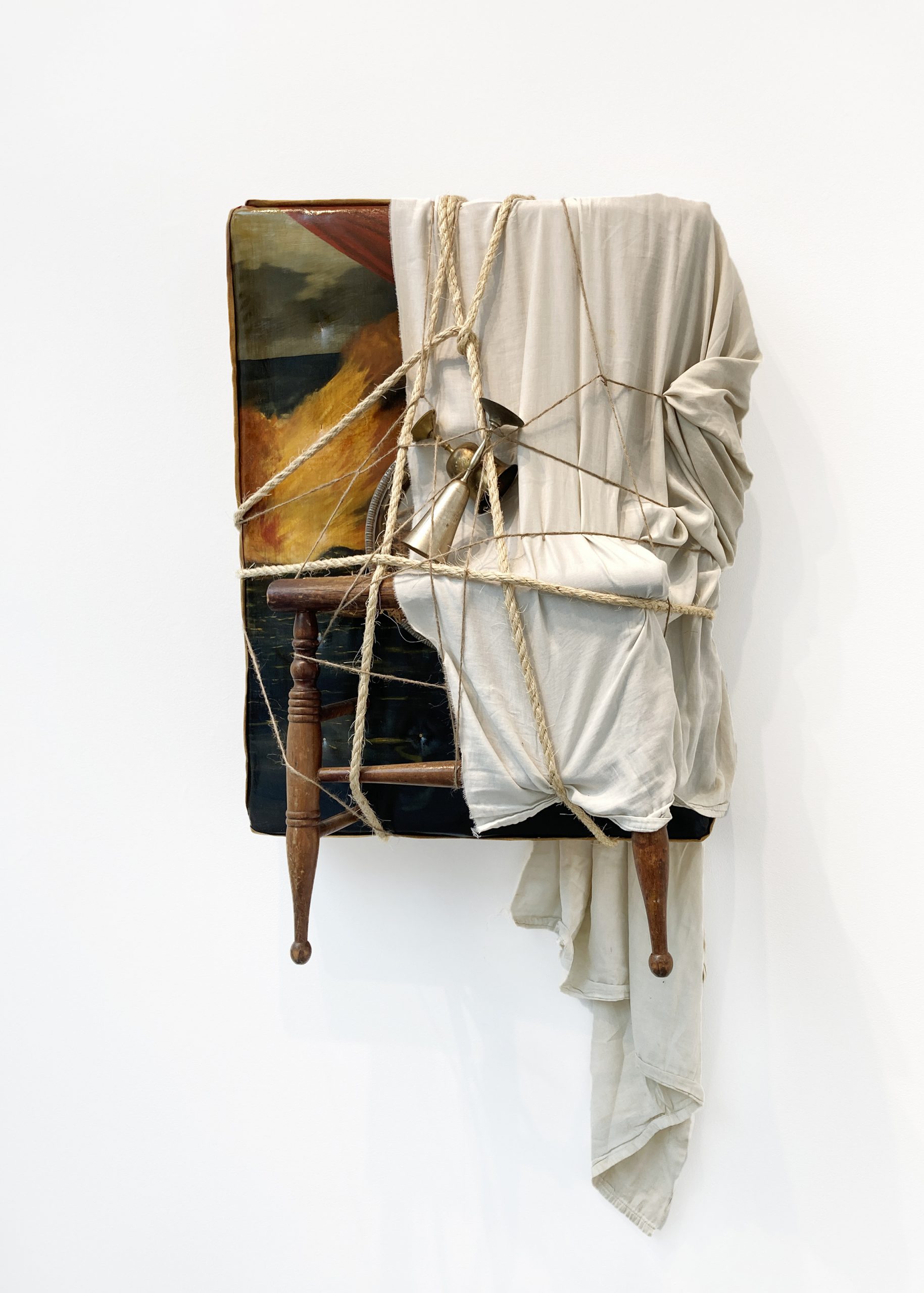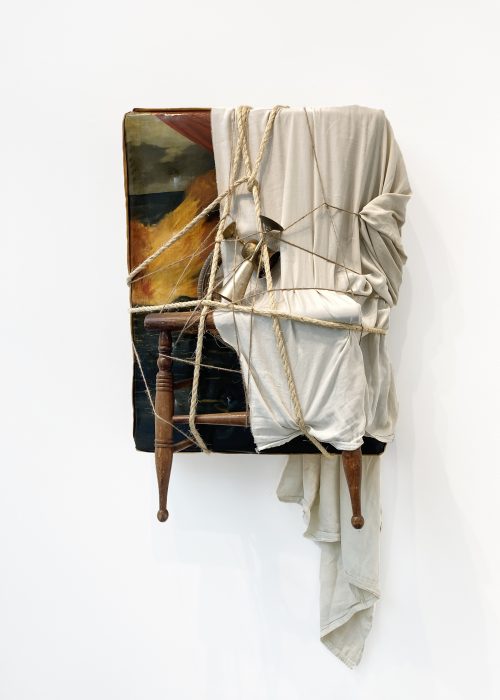April 10, 2024

Transcript by Gallery and Curatorial Fellow Calla Savelson

Transcript
This piece, titled Moving Days, hangs on the wall as a bundle of found items. We can see a painted mattress as the backing of the sculpture, part of a broken chair, a large dinner plate, two silver cups, and a white sheet all held together with a thick piece of rope and a thin piece of twine that forms a structure one might carry on their back.
In much of Eben Haines’ work, he focuses on how individualism has poisoned our collective lifestyle. As we fall deeper into late stage capitalism, our infrastructure places more value on profit rather than community well-being. Those with power are exponentially gaining more and more money while those without it are becoming increasingly isolated and losing the things they need to survive such as housing and well paying jobs. The housing crisis is getting worse each year as rent prices continuously increase and people are displaced from their homes and communities. On top of the economic disaster contributing to poor housing infrastructure, we are in the midst of an environmental catastrophe. The rapidly changing environment will only continue to get worse as long as those in the 1% remain on their current trajectory of putting their resources into the world as a way to make more money as opposed to taking care of their communities. In Boston, 80% of affordable housing resides on the coast and will be underwater within the next 10 years as sea levels continue to rise. With little to no plans made to combat this devastating reality, those who live in these homes are left with few options for the future.
With this piece, Haines is picturing a nomadic life, one where people have no permanent home, but are forced to move from place to place in search of security and stability. This sculpture is a collection of items that could be family heirlooms, objects that people hang on to as a way to store memories, honor their lives and remember what came before. But these items are in a precarious position. With no permanent home, they are at risk of being lost, of falling from their pack and getting separated from their person. If we continue on the path that we have been on, it is not just objects that are at risk of falling, but people and communities as well. How can we change this narrative? How can we switch from an individualist, profit-centered society to one that values its community above all else?